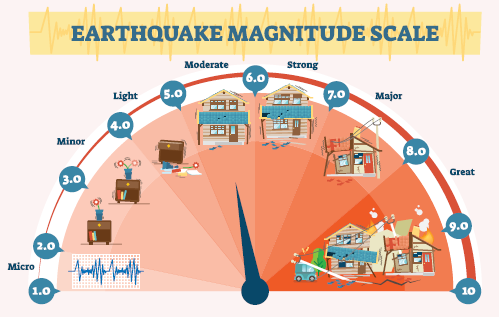EARTHQUAKE PREDICTION
Earthquakes are one of the deadliest natural disasters, and over the years people have been left hopeless because of them. However, scientists have started asking if earthquakes can be predicted. Scientists are working on programs to predict where and when an earthquake will happen. They hope to find an early warning system to save lives. Scientists who do this work are called seismologists.
Earthquakes may occur in many parts of the world. Giant ones have been recorded in Iran, China, Guatemala, Chile, India, and Alaska. Two of the biggest earthquakes that were ever recorded took place in China and Alaska. These earthquakes measured about 8.5 on the Richter Scale, which was devised by Charles Richter in 1935, and it is used for comparing energy levels of earthquakes. An earthquake that is measured as a 2 on this scale can be felt, but causes little damage. One that is measured 4.5 on the scale can cause slight damage, and an earthquake that has a reading of over 7 can cause major damage.
How do they occur? Earthquakes are caused by the movement of rocks along cracks, or faults, under the earth’s surface. A fault is produced when rocks next to each other are pulled in different directions. The best known fault in North America is the San Andreas Fault in the state of California in the United States.
The nations that are actively involved in earthquake prediction programs include Japan, China, Russia, and The United States. These countries have set up stations in areas of their countries where earthquakes are known to occur. These stations are ready for warning signs that show the weakening of rock layers before an earthquake. Many kinds of seismic instruments are used in these places to watch the movements of the earth’s surface. One of the instruments is a seismograph. It can follow vibrations in rock layers thousands of kilometres away. Tiltmeters are used to record changes in local gravity. The scientists also check water wells. They watch for change in the water level and temperature, which are signs of movement along faults.

